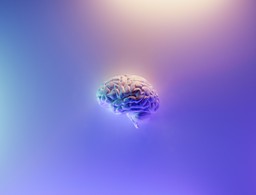Neurofeedback and ketamine-assisted psychotherapy (KAP) can work collaboratively to promote healing. Join Lisa Black, PsyD as we learn about her work bringing together clinical therapies and somatic practices to promote wellbeing.
Getting to Know Dr. Lisa Black, PsyD
Dr. Black is alumnus of Alliant International University, San Diego, where she earned her doctorate in clinical psychology, with a specialization in integrative psychology. She is a licensed clinical psychologist and board certified in biofeedback (BCB) and neurofeedback (BCN) with additional specialty in ketamine assisted psychotherapy.
Dr. Black completed her post-doctoral training at the University of California, San Diego (UCSD). She is one of UCSD’s Frontiers of Innovation Scholars Program (FISP) grantees, which offered grant support for her pioneering work to develop and implement neurofeedback services into UCSD Health’s family medicine program. Continuing her work at UCSD, she was lead therapist for biofeedback and neurofeedback services and psychologist for UCSD Health’s sports medicine concussion clinic.
Dr. Black is well versed in treating trauma/PTSD, post-concussion syndrome, anxiety, depression, and ADHD/ADD. She also enjoys working with those focused on improving performance and thriving.
Follow your Curiosity
Sign up to receive our free psychedelic courses, 45 page eBook, and special offers delivered to your inbox.Neuroscience & Alternative Medicine
Dr. Black blends neuroscience and alternative medicine in her practice. Her bachelor’s degree was focused on heavy behavioral psychology at University of Nevada, Reno. Looking for a different perspective from “just” behavioral psychology she decided to take a course with Dr. Stephen Hayes, the creator of acceptance and commitment therapy (ACT), who spoke about encouraging alcoholics to accept the fact that they have an addiction – a fact that Dr. Black found challenging in an engaging way.
“Why am I so uncomfortable with the thought of acceptance of something that is considered ‘bad’. So, I ended up joining his lab the next semester and doing a little bit more work with him. So, I have lots and lots of book knowledge…I can explain to people about the amygdala, the prefrontal cortex, why you’re scared. It really helps people understand how their brain is just as responsible [for what they’re experiencing] as they are. When I do neurofeedback and show people their brainwaves, they’re like, “Oh, THAT’S why I’m anxious.” Or in biofeedback, when I finally get them to calm down and they’re not in this high-anxiety state, they’re like, “THAT’s what calm feels like. I haven’t felt calm, ever.”
…really trying to get people to understand that the way through healing, especially through trauma, is the whole system.
In my doctorate, I got to integrative psychology, which includes things like art therapy, existential death and dying, and transpersonal [psychology], a lot more stuff that I felt super excited about. Dr. Black incorporates all those modalities and psychological perspectives into her therapeutic approach, while also incorporating things she has learned on her own journey.
‘But the other part is [what] I have learned on my own healing journey. One of the most profound experiences of my life was a Buddhist retreat in partial silence for three days. There were four hours each day where we would have talk time where you really were processing your feelings. So, it was really like a group therapy for two to four hours.
And I remember one of the brothers asking me, “Are you a good person?…To which I responded, yeah! And then he asked again… Are you sure?” And I was like, “I don’t know now, am I a good person?” So then you go into silence for another full 24 hours and you’re left with your own thoughts, regrets, and all of those things.
That experience taught me to stop, to think, and not to shoot from the hip, because my brain tends to think pretty quickly, so it just already has an answer. So [it taught me] to slow down and get into your body and understand what your memories do to your mind, your body, to your thought processes, to your behavioral processes, to everything.
So then I started to get really into my own body journey and more of the somatic stuff. When I do therapy with people, it is very common for me to talk about the prefrontal cortex and look at your scans. And then, I’ll be like, tell me about where in your body you feel that…tell me what you feel and is it hot and is there a picture to it, really trying to get people to understand that the way through healing, especially through trauma, is the whole system.
Focusing on one thing is like taking a squirt gun to an infernal fire, you’re trying but it’s not really putting anything out…So what I am trying to say is I have several years of education, but I also have several years of life education. And I really believe that putting it all together really, really creates for a strong therapy.
Ketamine-Assisted Psychotherapy
Dr. Black first connected with ketamine-assisted psychotherapy (KAP) when she joined Kaizen Brain Center. She started as an intern at the University of California, San Diego (UCSD), and later became one of the founders of the neurofeedback program at UCSD’s Family Medicine program.
She transitioned last summer from working at the UC in order to work with ketamine and gain other opportunities were not currently offered at the UC. “I work with massive trauma and I felt like we were doing some great work, but there were still pieces missing. So when I left I had an opportunity at Kaizen Brain Center, which is where I’m at now, and in one week, I’ll be moving to Santa Cruz and joining Santa Cruz Integrative Medicine (SCIM).
At the Kaizen Brain Center, we started doing KAP with Spravato, which can be considered more of a psycholytic dose, which means you will go on a little bit of a journey, especially if you’re sensitive to the medications, but most of the time, you are still awake, aware, and can talk. I was lucky enough to take Phil Wolfson’s advanced training, where he does a lot more journey doses, but they also showed me psycholytic [dose] with EMDR.
Now in a month, I’m going to be trained in EMDR, because I thought that really worked really well…and when it comes to psilocybin and MDMA, I’m hopeful that within the next year or two, that will be legal and more available to the public. So there will be all of those opportunities that I’m hoping that will come down the pipeline. At this new practice (SCIM), they give me a little bit more flexibility on doing both psycholytic doses and journey doses, which I think both have pluses to them.
Neurofeedback & Biofeedback
Dr. Black loves incorporating neurofeedback and biofeedback techniques into her therapy. “Neurofeedback and biofeedback are just body feedback. Neurofeedback is feedback about your brainwaves, and we can train those brainwaves by giving you feedback.
When I started adding in bio- and neurofeedback, I did it on myself. You should know that basically everything I do, I’ve tried it all myself, because I think you really need to understand what it feels like. I remember getting this incredible understanding that I have more control than I thought I did over my brainwaves, over my thought processes, over my emotions.
So, if we want to be in low beta, which is a popular state for attention, concentration, reduction of anxiety, then the system gives you a reward when you maintain those brainwaves, [such as a beautiful picture of calming music]. [Or if you’re shifting out of the low beta,] there will be not-so-pleasant things, like screeching noises…And the body likes the pleasant noises and pictures better so it tends to hold those brainwaves, because it’s getting that positive feedback.
Then individuals are like, “Whoa, that was really fast, I did that myself.” In my practice, I like to give them emotional feedback along with the technical feedback. So a lot of times, I’ll hear a certain noise and I know that they’re like overthinking or obsessing, and I’ll ask, “Are you thinking about lunch? Your to-do list?” And they’ll go, “Uh-oh, you caught me.” And we kind of laugh, because the sounds and the feedback are pretty specific. When you’ve done it, like for years, you can really tune into the general theme of what they’re thinking.
That therapy also does a really great job at compassion. A lot of people say, “I couldn’t hold the green, I had the picture and it faded out. I’m so frustrated. I can’t figure it out.” And then I come in and say, “Stop being so hard on yourself and just gently bring yourself back.” And they start to realize what that is [how to control their brainwaves].
Additionally, I really love to do alpha-theta [neurofeedback training]. I think it’s very similar [anecdotally] to a psycholytic dose of ketamine in the sense that it takes you to your theta state, which is just between awake and asleep, and it allows memories to come up and to process things without that prefrontal cortex being so on. Ketamine kind of pushes you forward [into that state], whether you like it or not sometimes, while neurofeedback doesn’t and you have a lot more control.
Biofeedback is body-based, so your peripheral nervous system, your breath, your temperature, your heart rate, sweat. And we teach people how to control that. So people are pretty blown away when I tell them, “You can control your own temperature, you can control your own heart rate.” And that’s really, really excellent for things like panic. I know my exact breath rate that takes my elevated breath rate back down to the parasympathetic nervous system state.
Bio- and neurofeedback are really awesome pairs when you’re teaching somebody that they have way more control than they think. But I will add this, and some of my patients get so frustrated with this statement: The control is not in the control. It’s in allowing and being, not overthinking and controlling.
My real OCD/high anxiety individuals sign up for this and they’re like, “I’m going to control my brainwaves!” Slowly, they figure out that the control comes more from letting and mindfulness. Learning more about how your body works is incredible.
Combination Treatments with Neurofeedback
Dr. Black finds combination treatments, such as combining neurofeedback or biofeedback with KAP or psychotherapy, to be particularly effective. “I have seen so many of my patients – my concussion patients versus my high anxiety patients versus my trauma patients – some that hold all of those diagnoses, need a little bit extra to get out of their own head and to get permission to be kind to themselves.
I’m like sitting on their shoulder, you know, “Stop being so mean to yourself, be kind to yourself, relax, let things flow.” You need that, because that voice doesn’t naturally exist inside of you for whatever reason. That’s combining the psychotherapy and the relationship.
When combining the therapies together, I found, especially for massive trauma that likely has repressed memories, that I like to do ketamine first twice a week for a month. Then when we move to ketamine once a week, we add in neurofeedback twice a week. Then we go to the next month where we transition ketamine to every other week while continuing neurofeedback twice a week. If they need biofeedback added in there, that’s an easy one, we just add it in wherever we can throw it in.
One of my patients described the process as if his life was a glass plate and trauma smashed that plate. The ketamine picked up the big pieces, and neurofeedback helped him pick up the little pieces. The ketamine offers fantastic insight and the neurofeedback offers fantastic practice and integration, which is a missing piece in a lot of psychedelic work.
For individuals that may be detached from their body, as often happens in trauma, adding biofeedback can really help. [These therapies] are an incredible resource I love combining them!…. With ketamine, what I do is a bit different from what some others might do with the psycholytic doses. It is not always just Socratic questioning.
Sometimes I do challenge and sometimes I have people do their own thought challenges in those ketamine sessions. With journey doses, I like to do therapy right as they’re coming out. They’re still a little under the influence of the medicine and their memory is fresh, and they’re still so open and so available to chat. I wait until they can chat, and I do an hour of therapy then.
Healing Trauma with Neurofeedback & Body Connection
I specialize in TBI because I was the psychologist for a sports concussion clinic, the stuff that I learned there is absolutely amazing. I have knowledge of things like eye movements, VOMS, saccades, etc. I also gained an incredible knowledge about return to learn, return to exercise, return, to work, return to driving, and how specifically to do that.
I learned to challenge the old ways of thinking, such as if you have a concussion you’re told to go in your room, shut off lights, and don’t listen to music or anything until you’re healed. What we’re finding is that causes depression. So, the depression starts to kick in and their concussion symptoms don’t heal as fast or at all. I am educated in all of these more physical things.
The other half is the relationship and holding space. I’m a believer that all of us are traumatized. We have a tendency to say what we’ve gone through isn’t trauma because maybe someone else has gone through something “worse”, but that it’s all relative.
We need somebody to tell us it’s okay that this affects us and especially chronic trauma, that can be more covert…The therapeutic relationship allows us to say we’re going to dive into it and maybe it’s not as bad as we thought, or maybe it’s extra bad, you know? And, but either way, I have your hand and we’re going to go into the dark together and we’re going to come back out…[of the trauma experience], there is meaning and an essence [within the therapeutic relationship]- that we go through something and then somebody helps support us, help us organize what happen, and help us come back…
We can intellectualize trauma, but it never really makes sense. So, the best that we can really do is to organize it and then take the things that we’ve learned from it. And that one thing could be learning how to let somebody else be vulnerable with you, hold your hand through that darkness and then come back out of that darkness.
There’s something about that that’s an incredible part of life and adds a lot of living to life. I do think it’s unfortunate that it comes sometimes with trauma…When you get something from the trauma, a lesson from that trauma, even if that lesson is just to allow someone to be a witness to your experience, to be vulnerable with you in the aftermath, it sinks into your body and it feels grounded, it feels real… and it can fuel connection.
Connect
Dr. Black would love to connect with you on your healing journey. You can connect with Dr. Black at Psychedelic Support and SantaCruzIntegrativeMedicine.com.







